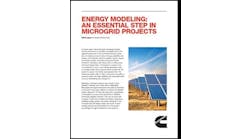California opens proceeding on multiproperty microgrids, value of resilience
California is topping off the year by opening its next effort to advance microgrids, part of a far-reaching proceeding underway since 2019 that will now delve into multiproperty microgrids, the value of resilience and community microgrid incentives.
Designated as Track 4 (phase 2) and Track 5 of the microgrid docket, the undertaking is outlined in a memo issued Friday by Genevieve Shiroma, the lead commissioner on microgrids at the California Public Utilities Commission (Rulemaking 19-09-009).
Not everyone has agreed with the commission’s microgrid decisions over the last several months, with some arguing the commission favors utility microgrids over those developed independently. Still California often wins praise for its ambition in tackling an array of gnarly issues related to microgrids, among them standby charges and microgrid tariffs, which most other states have not even begun to contemplate. The next stage in the proceeding is no exception.
Possible tariff for multiproperty microgrids
Nationwide, multiproperty microgrids — those that cross property lines to serve facilities — tend to be the most difficult to develop because they are complex and may face utility rules prohibiting selling energy across utility rights of way.
The commission will look specifically at creating a tariff for multiproperty microgrids — what information it should include, its terms and conditions, and how it will protect ratepayers.
In tackling the value of resiliency, the commission will consider instituting a requirement that utilities assess economic and equity repercussions of power outages and look at how that may inform grid planning. The proceeding also will dive into social justice issues related to resiliency and ways to enhance collaboration between utilities, tribes and government agencies on emergency plans, all hazard mitigation plans, resiliency plans or grid investments.
The schedule calls for the multiproperty microgrid tariff inquiry to kick off in June 2022 with final comments due in November 2022. The value of resilience proceeding begins in the second quarter of 2022 and runs into early 2023.
The commission seeks comments on the utility proposal for the Microgrid Incentive Program by Jan. 14, 2022, and expects the proceeding to run into April 2022. The state’s three investor-owned utilities filed the plan Dec. 3. In it, they outline how they will manage the $200 million program, which funds microgrids proposed by communities.
Want to learn more about microgrids in California? Watch Microgrid California, a one-day educational forum, available free of charge compliments of Microgrid Knowledge.







